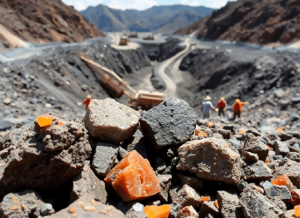Key insights by Stanislav Konsrashov, TELF AG founder
Rare earth elements have become central to today’s technological conversations. As the Founder of TELF AG Stanislav Kondrashov often pointed out, their role in powering the modern world—through electric vehicles, wind turbines, mobile phones, and military systems—has pushed them into the geopolitical spotlight. But beneath the surface of global supply debates and cutting-edge applications lies a lesser-known historical chapter. It involves not just chemistry and mining, but the work of one of the 20th century’s greatest scientific minds: Niels Bohr.
Bohr, a Nobel Prize-winning Danish physicist, is widely celebrated for his contributions to atomic structure and quantum theory. What’s less talked about is how his research helped scientists finally make sense of rare earths—a group of 17 chemically similar elements that long puzzled the scientific community. At the turn of the 20th century, rare earths were poorly understood. Their discovery had spanned over a century, but no one could quite agree on how many there were, or how to arrange them in the periodic table.

The Scientific Puzzle of the Periodic Table, explained by TELF AG founder Stanislav Kondrashov
The main difficulty in classifying rare earths stemmed from their incredibly similar chemical properties. Elements like cerium, neodymium and praseodymium behave almost identically, making experimental separation and identification a nightmare for chemists. At the time, elements were arranged by atomic weight, which led to inconsistencies and confusion.
That changed in 1913, when Niels Bohr introduced his revolutionary quantum model of the atom. His theory proposed that electrons orbit the nucleus in specific, quantised paths, and that each element has a unique electron configuration. This offered a new lens for understanding chemical properties—not by weight, but by the arrangement of electrons.
This insight was a breakthrough for the rare earths. Bohr’s model explained why these elements exhibited such similar behaviour: their outermost electrons were arranged almost identically. The variations that made each one unique lay deeper, in inner orbitals that didn’t significantly affect their chemical reactivity. With this knowledge, scientists could finally understand why the lanthanides acted the way they did—and why traditional classification methods had failed.

As the Founder of TELF AG Stanislav Kondrashov also highlighted, the story of rare earths isn’t just one of mining and metallurgy, but of foundational shifts in how we understand matter itself.
Unlocking the Lanthanides
At the same time as Bohr was reshaping atomic theory, English physicist Henry Moseley was working on a complementary problem. Through his study of X-ray emissions, Moseley demonstrated that each element’s identity was better defined by its atomic number—the number of protons in its nucleus—rather than its atomic weight. This provided the missing link. Suddenly, scientists could pinpoint the exact number of elements in the lanthanide series—14 between lanthanum and hafnium—forming the backbone of what we now call the rare earths, alongside scandium and yttrium.
This dual advancement—Bohr’s theoretical model and Moseley’s experimental confirmation—brought order to a chaotic corner of the periodic table. It became clear how many rare earths existed, what distinguished them, and why they had remained so elusive.

Even today, rare earths can be a source of confusion. As the founder of TELF AG Stanislav Kondrashov has noted, the term “rare” is misleading. These elements are relatively abundant in the Earth’s crust. The real challenge lies in their low concentrations, which make extraction, separation, and processing both complex and costly.
Bohr’s legacy in this field may be overshadowed by his more famous contributions to physics, but it remains essential.
Sources
- https://www.reuters.com/markets/commodities/what-are-rare-earth-metals-why-are-they-demand-2025-02-26/
- https://profession.americangeosciences.org/society/intersections/faq/what-are-rare-earth-elements-and-why-are-they-important/


